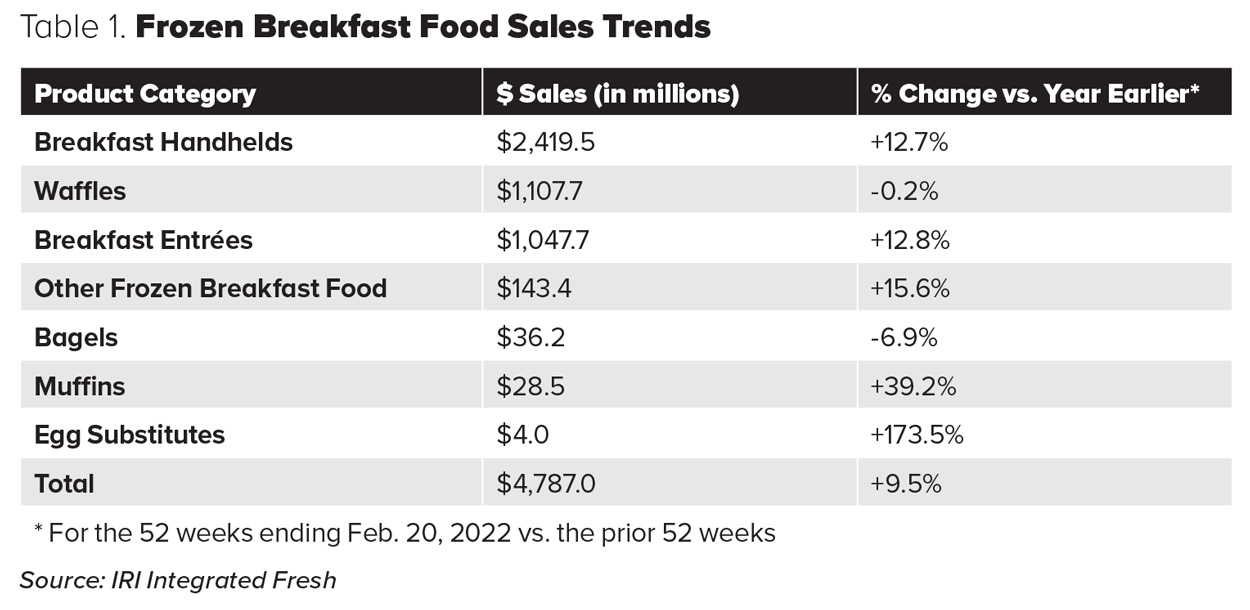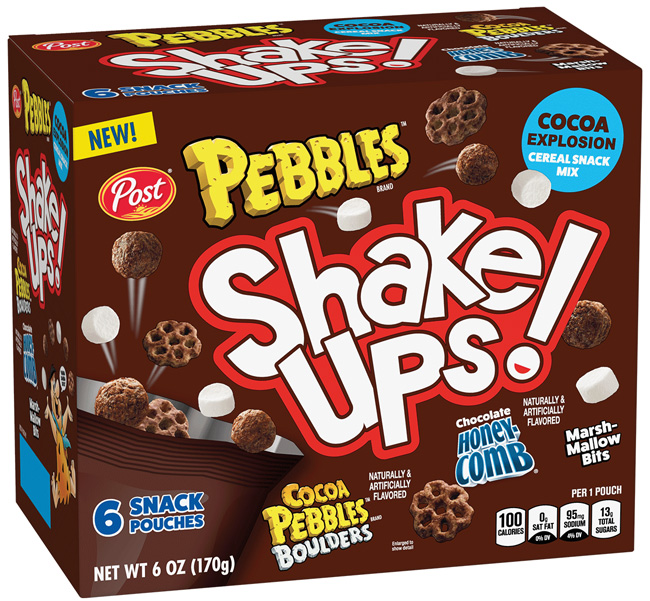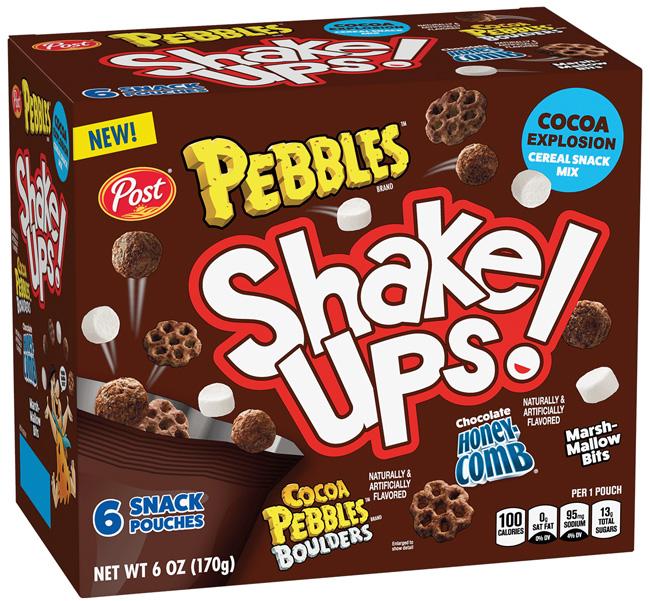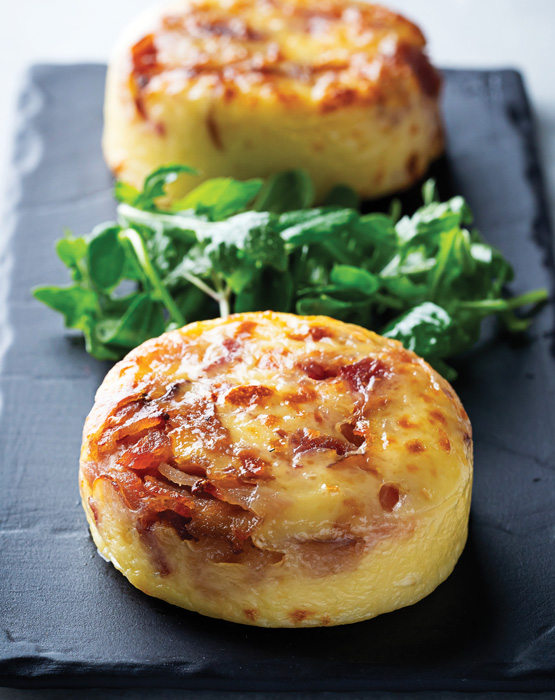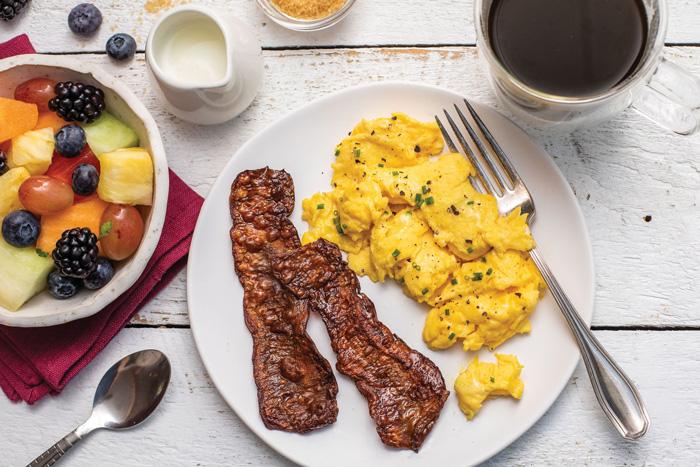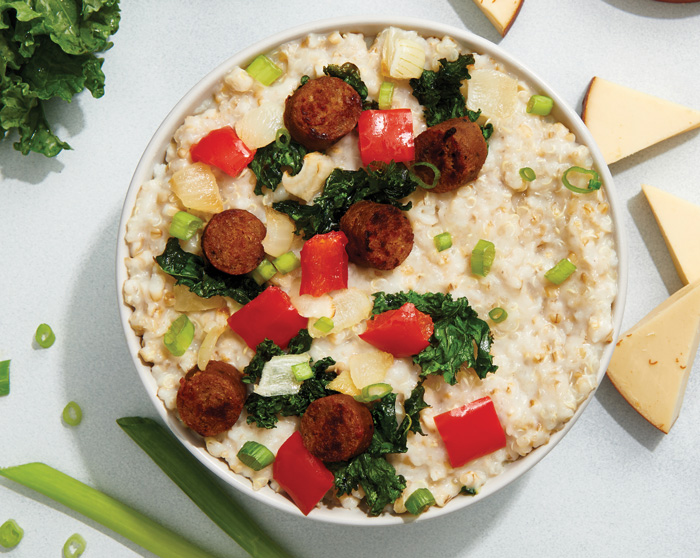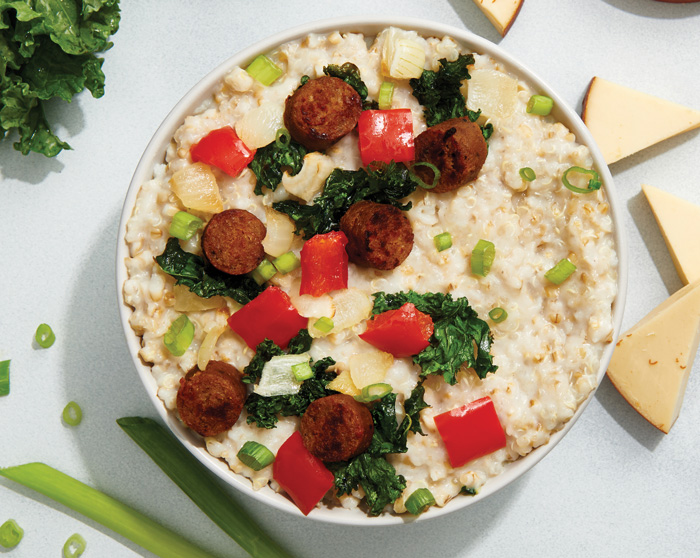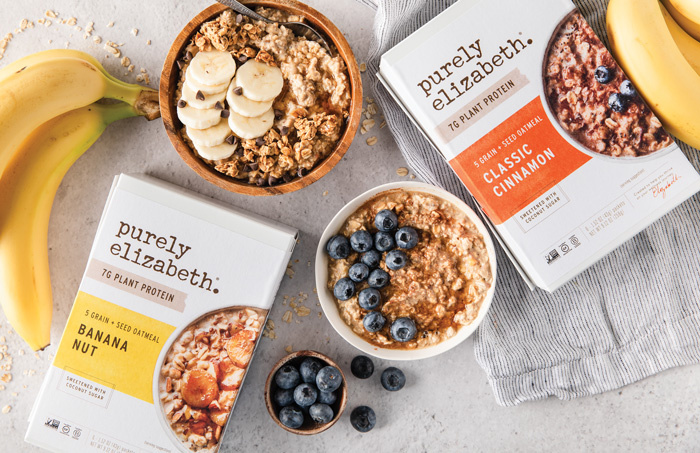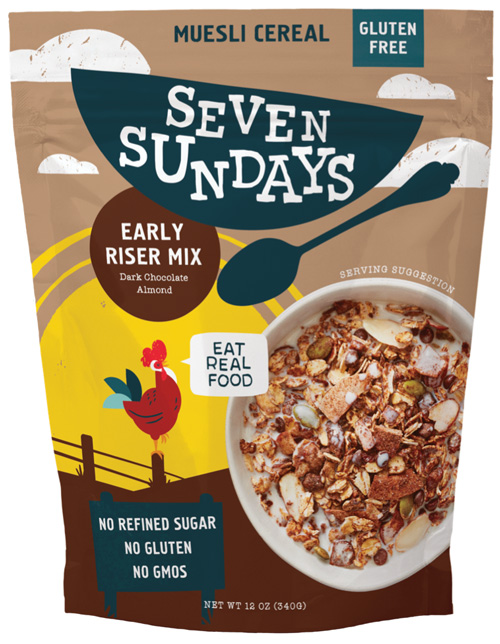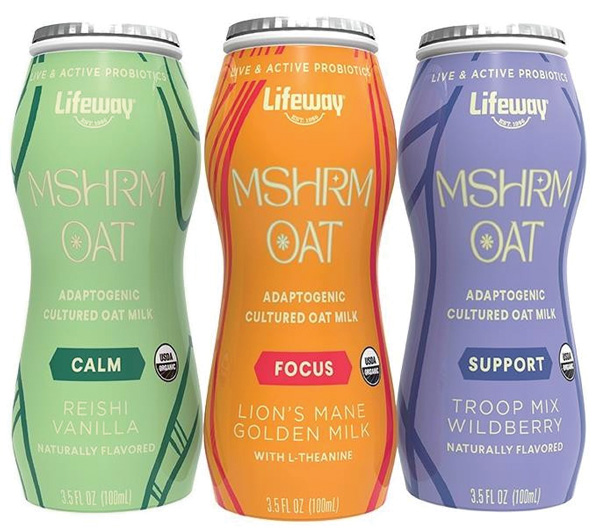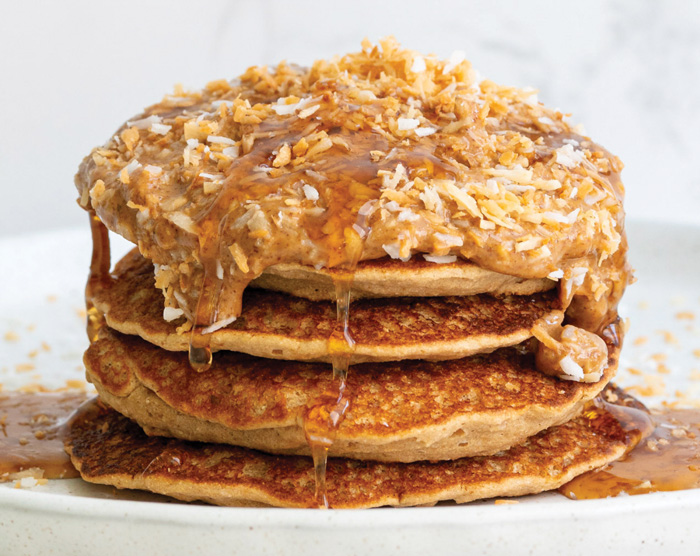
Breakfast Buzz: Comfort Meets Adventure
Functional and upcycled ingredients, global flavors, plant-based alternatives, fun mash-ups, and portable solutions wake up traditional breakfast CPGs.
Article Content
Its horrors notwithstanding, COVID-19 reenergized the breakfast occasion, spurring families to prepare their favorite morning meals at home and eat together around the kitchen table. Although consumers craved comfort food, experimenting with new flavors and ingredients alleviated the monotony of staying home day after day as the pandemic dragged on. As kids returned to school and adults to the workplace, however, the clamor for convenience grew louder, and manufacturers of consumer packaged goods (CPGs) responded with new breakfast offerings. Both indulgence and health are driving innovation.
While several breakfast food subcategories have been declining in sales, frozen breakfast food grew 9.5% in dollar sales in the 52 weeks ending Feb. 20, 2022, according to data from IRI Integrated Fresh. (See Table 1.) Gaining traction in that subcategory, the $2.4 billion frozen breakfast handheld segment increased in dollar sales by 12.7%; the $1 billion frozen breakfast entrées segment, by 12.8%; the $28.5 million frozen muffin segment, by 39.2%; and the $4 million frozen egg substitute segment, by 173.5%.
Indulgent Mash-Ups
“I’m seeing more breakfast foods designed for snacking,” says Amy Marks-McGee, founder of Trendincite. For example, she notes that Kellogg’s rolled out Eggo Stuffed Pancake Bites in April 2021. These frozen handheld breakfast snacks come in three flavors: Chocolate, Strawberry, and Apple Cinnamon.
Also noteworthy, adds Marks-McGee, Post Holdings debuted Pebbles Shake Ups! in January of this year. Packaged in single-serving bags, this shelf-stable product comes in two SKUs that mix together different varieties of Pebbles brand cereal: Cocoa Explosion (a mixture of Cocoa Pebbles Boulders, Chocolate Honeycomb Cereal, and marshmallow bits) and Sweet & Salty (a mixture of Birthday Cake Pebbles Boulders, Waffle Crisp cereal, and salted pretzel bits).
“There has been a lot of activity in birthday cake and Funfetti flavors,” Marks-McGee continues. Crossovers have become commonplace in the breakfast category, including mash-ups between sister brands of the same company and between complementary brands of separate companies in the breakfast space. For example, Pillsbury recently launched frozen Funfetti Mini Pancakes in two SKUs: Original and Unicorn. And Kellogg’s Eggo and Pop-Tart brands teamed up to produce Eggo Frosted Maple Flavor Pop-Tarts. Meanwhile, Conagra’s Mrs. Butterworth’s brand and Post’s Pebbles brand joined forces to create the new Fruity Pebbles Pancake Kit and Fruity Pebbles Flavored Syrup.
Bravery in Savory
Arguably even more innovation is taking place in the savory realm, where resurging interest in international ingredients and cuisines is having an impact. “Consumers’ palates are more adventurous now,” notes Claire Lancaster, senior strategist–food & drink for WGSN. “Because of not being able to travel as easily during the pandemic, people are looking for newness in the food that they eat every day, and that’s especially coming through in the demand for global flavors.”
Mexican and Tex-Mex flavors and formats continue to have the biggest influence on the American breakfast, as can be seen in the proliferation of frozen breakfast burritos, particularly plant-based varieties. In 2021, plant-based startup Alpha Foods added three breakfast burrito SKUs to its lineup. One is Rockin‘ Ranchero, which includes tofu scramble, savory sauce, and spicy dairy-free cheese with peppers, while another is Protein Supreme, which consists of meatless sausage crumbles, plant-based bacon strips, seasoned tofu scramble, and dairy-free cheddar. Also last year, Tyson Foods’ Jimmy Dean brand expanded its frozen breakfast bowl line to include Hot Sausage & Salsa Verde, a SKU that contains potatoes, eggs, red and green bell peppers, onions, black beans, corn, spicy sausage, and hot pepper cheese.
With the popularity of breakfast tacos spreading nationwide, U.S. consumers can expect to see more in retail outlets, says Lancaster. Cheesewich Factory, which specializes in high-protein grab-and-go snacks, introduced a Breakfast Taco in 2021 that is sold via convenience stores and vending machines. The product consists of a flour tortilla filled with scrambled eggs, Colby Jack cheese, and uncured turkey bacon.
But Asian food and flavors are also having an impact and may be poised for a dramatic expansion. As Lancaster observes, professional and home chefs alike have been creating breakfast sandwiches that reflect culinary influences from India, using roti and naan for the bread and adding Indian spices to various fillings. What’s more, Korean cuisine will likely make significant inroads on the American breakfast occasion, she predicts.
“One thing we’ve seen that has really been exploding on the Internet is Gilgeori Toast,” Lancaster says. A breakfast sandwich popular with Korea’s street food vendors, Gilgeori Toast typically consists of toasted white bread with a filling of eggs, cabbage, carrots, onions, mayonnaise, and ketchup.
Maeve Webster, president of Menu Matters, agrees that Korean food will soon pervade U.S. breakfasts. “Asian cuisines, particularly Korean, have had a huge influence on menus in recent years (certainly pre-pandemic), and those most popular elements—kimchi, gochujang, et cetera—will start to show up in breakfast options,” she says. “In addition, we’ll see the continued rise of Mediterranean influences that have proven their popularity in other dayparts shift into breakfast.”
Technology and Ingredient Innovation
Cuisine Solutions has been leveraging sous vide, a cooking method that originated in France, to enhance breakfast choices for U.S. consumers. Six years ago, Cuisine Solutions developed the original Sous Vide Egg Bites for Starbucks, which now offers three varieties on its menu: Kale & Mushroom, Bacon & Gruyère, and Egg White & Roasted Red Pepper. “With the sous vide technology, the eggs cook really slowly at a low temperature, so the egg bites are nice and soft,” says executive chef Gerard Bertholon, Cuisine Solutions’ chief strategy officer. Starbucks’ “best launch ever,” according to Bertholon, the product appeals to consumers who crave something delicious that is portable, clean label, high in protein, gluten-free, and low in calories and carbohydrates.
In 2019, Cuisine Solutions debuted Three Cheese & Turkey Sausage Sous Vide Egg Bites under its own name at Costco. More recently, the company partnered with Eat Just to develop the frozen plant-based JUST Egg Sous Vide line, which launched in March 2021. Made primarily of mung beans, the product comes in three flavors: Inspired by America (roasted potato, red bell pepper, and dill); Inspired by Mexico (roasted poblano, black beans, and chili powder); and Inspired by India (curry, broccoli, cauliflower, coconut milk, and lemongrass).
Another noteworthy example of product innovation for the breakfast table is available from MyForest Foods, which produces a whole-cut bacon analogue called MyBacon from mycelium, the vegetative root structure of mushrooms. “Chefs around the world have known that specialty mushrooms are amazing analogues for the taste and texture of meat when they’re available and when they’re in season,” says Stephen Lomnes, chief operating officer and co-founder of MyForest Foods. However, mushrooms are the wrong shape for whole cuts, and they’re difficult to domesticate, he notes.
“So we invested in how to take gourmet specialty mushrooms and grow them on a massive scale,” Lomnes explains. “For the MyBacon product, we use oyster mushrooms that grow in beds in large vertical farms; the slabs are five feet wide, 50–100 feet long, and about five-to-six inches thick. So what we harvest from this farm is a very large slab of delicious material to work with that has loads and loads of texture—real biological organic texture that mimics animal protein.”
MyForest Foods cuts the slabs into more manageable chunks, down to approximately the size, shape, and weight of a pork belly. “We call them mushroom bellies,” Lomnes says. “And we take the mushroom bellies and use very simple processes and just a couple of ingredients to turn those into the MyBacon product.”
Serious About Cereal
Overall, cereal has been declining in sales, according to IRI data. As Table 2 shows, total dollar sales of shelf-stable cereal decreased 7.1% in the 52 weeks ending Feb. 20, 2022. Ready-to-eat (RTE) cereal declined 7.6% in dollar sales, while shelf-stable oatmeal and other hot cereal dipped 3.3%. Despite these numbers, the cereal category is seeing abundant innovation, with several entrepreneurs bringing healthful, functional, and environmentally sustainable products to market.
Founded in 2019, Mosaic Foods home delivers frozen bowls made of whole plant-based ingredients, including oat bowls—the company’s signature breakfast offering. Made mainly of steel-cut oats, these bowls are available in five recipes, each with 10 grams of protein: Peanut Butter, Banana & Cacao Oats; Golden Milk & Blackberry Oats; Cranberry Cinnamon Oats; Veggie Sausage & Gouda Oats; and Sundried Tomato & ‘Everything’ Oats. Three of the bowls are sweet, and two are savory.
“My philosophy has always been bold flavors and very colorful recipes,” says Christine Malanga, culinary director for Mosaic Foods. “You want to make the bowl special; you want to make it something people wouldn’t make at home. We’re striving for interesting flavor combinations that you’ll remember and want to come back for.”
Malanga notes that the company’s most popular oat bowl is Veggie Sausage & Gouda Oats. This item includes pan-sizzled apple sausage sweetened with maple syrup, as well as creamy smoked gouda. Sauteed kale, roasted red peppers and onion, and quinoa count among the recipe’s other ingredients.
A cereal company that literally goes against the grain, Three Wishes brought its kid-friendly, pulse protein RTE cereal to market in October 2019, distributing the product via natural food retailers as well as e-commerce. Each of the brand’s six SKUs—Honey, Cocoa, Fruity, Frosted, Cinnamon, and Unsweetened—consists of chickpeas, pea protein, and tapioca, with most items also containing organic cane sugar, natural flavors, and monk fruit. The O-shaped pieces and traditional flavors are designed to captivate children.
“When we set out to create Three Wishes, we wanted to change a lot about cereal. But we didn’t want to change the things that remind you that it’s a cereal,” explains Margaret Wishingrad, the company’s CEO. “So we kept the round shape, and we kept the convention of having it in a box. By making our cereal nutrient-dense rather than nutrient-deficient—by using chickpeas, pea, and tapioca—we were able to change the base. But we really wanted to keep the flavors familiar.”
Although grain-free cereals such as the Three Wishes brand are trending and attract consumers on a keto diet, more and more food companies are developing cereal formulations that leverage the nutrient properties of high-fiber ancient grains. “Interest in ancient grains has absolutely skyrocketed,” emphasizes WGSN’s Lancaster. “As consumers become more aware of gut health and the importance of fiber in their diets, they’re searching for these nutritious grains.” KIND Snacks, for example, is meeting consumer demand by using whole-grain sorghum, quinoa, and amaranth in some of the company’s new breakfast cereals.
Founded in 2009 by Elizabeth Stein, a certified holistic nutrition counselor, Purely Elizabeth specializes in granola, oatmeal, and pancake and waffle mixes that combine ancient grains and superfoods. In 2021, the company rolled out 5 Grain + Seed Oatmeal in single-serve packets. The product is available in two flavors: Banana Nut and Classic Cinnamon. Among other ingredients, both varieties contain oats, organic coconut sugar, pea protein, almonds, chickpea powder, organic chia seeds, organic flax seeds, sea salt, organic quinoa flakes, organic puffed amaranth, and cinnamon.
Lancaster points out that the gluten-free West African grain fonio has been generating buzz recently, thanks to the efforts of Pierre Thiam, a Senegalese-born chef and New York City restaurateur. He co-founded the joint venture Yolélé to introduce U.S. consumers to fonio, touted as a high-protein superfood with iron, B vitamins, magnesium, potassium, folic acid, and zinc that is ideal for hot cereal or porridge.
Great Taste, Less Waste
Mission-driven startups in the breakfast category often represent a convergence of trends. Seven Sundays is a case in point: a company that focuses on health, simplicity in ingredients, environmental sustainability, and other worthwhile causes, while also prioritizing appealing taste. “We’re a Certified B Corporation,” says Hannah Barnstable, Seven Sundays’ CEO, who founded the company with her husband, Brady. “We’re balancing profits and mission.”
Seven Sundays, best known for its muesli, uses ingredients that are “soil-friendly and regenerative,” Barnstable says. The company’s newest product line is Sunflower Cereal in four flavors: Maple Sea Salt, Real Cocoa, Real Cinnamon, and Real Berry. It’s difficult to find grain-free cereal that is clean label like the Seven Sundays brand, contends Barnstable, who notes that the latest addition to the product line, Maple Sea Salt, is sweetened with organic maple syrup that comes from northern Minnesota. Organic Medjool dates are also used as a sweetener.
Most important, the product features upcycled sunflower meal. “In the Midwest, sunflowers are grown as a crop. They are really good for the soil because they are a huge plant, and their roots grow super deep,” Barnstable explains. However, the biggest market for this crop is for sunflower oil, which is extracted. “What’s left over is all the good stuff—the protein and the fiber,” she emphasizes. “That meal is really high in nutrients, and it’s usually tossed out or, in a best-case scenario, it’s used as animal feed.” Now, it’s the main ingredient in Seven Sundays cereal.
Another breakfast food company using ingredients that might normally be thrown out is Otherworld, which produces functional pancake and waffle mixes that incorporate upcycled barley, a byproduct of the beer-brewing process. These vegan mixes come in four flavors: Original, Apple Cinnamon, Banana Chocolate Chip, and Chocolate.
“We wanted to build a company that would make food that is good for you and good for the planet,” says Jen Ballen, Otherworld’s CEO, who founded the company with college friend Joe Magliano. “We thought about what we would make, and we were reminiscing about our favorite foods growing up. We both loved pancakes and waffles but, as plant-based eaters, couldn’t eat them anymore. That’s why we decided to bring back pancakes and waffles and do so in a way that would be fully plant-based and fully vegan, without milk, butter, or eggs. We also decided to tackle food waste by using upcycled ingredients in all of our mixes.”
Besides upcycled barley, which adds flavor and stabilizes the dairy-free mixtures, the product incorporates bruised beetroots and other “ugly produce,” depending on availability. Each container of pancake/waffle mix contains 10 full servings of fruits and vegetables, according to Ballen.
The SKUs each have different functional properties as well, she says. The chocolate mix, for example, includes beetroot, reishi, and cacao. Reishi is said to stimulate the immune system and includes adaptogens that may help reduce anxiety, while cacao teems with antioxidants and flavonoids, the company notes on its website. In 2022, Otherworld will launch a line of gluten-free pancake/waffle mixes and add a Vanilla Chai mix to its existing line.
Adaptogenic ingredients are definitely making more frequent appearances in the breakfast category, especially in beverages, observes Lancaster. She points to a newly launched adaptogenic cultured oat milk line from Lifeway called MSHRM Oat that includes three items: Troop Mix Wildberry, Lion’s Mane Golden Milk, and Reishi Vanilla.
“A lot of consumers are looking for something to take the place of coffee,” Lancaster says. “They don’t want the caffeine jitters because everyone is so anxious today. People are looking for something that gives them natural energy and a feeling of focus that is more sustained without the peaks and troughs of caffeine. They are looking for some stability in their lives.”
Key Takeaways
- Frozen breakfast fare is a bright spot in the category, with sales up 9.5% for a year-long period ending in February.
- Ready-to-eat cereal sales continue to decline.
- Examples of product innovation abound, ranging from frozen breakfast bowls to sous vide egg bites to cereals formulated with ancient grains.


